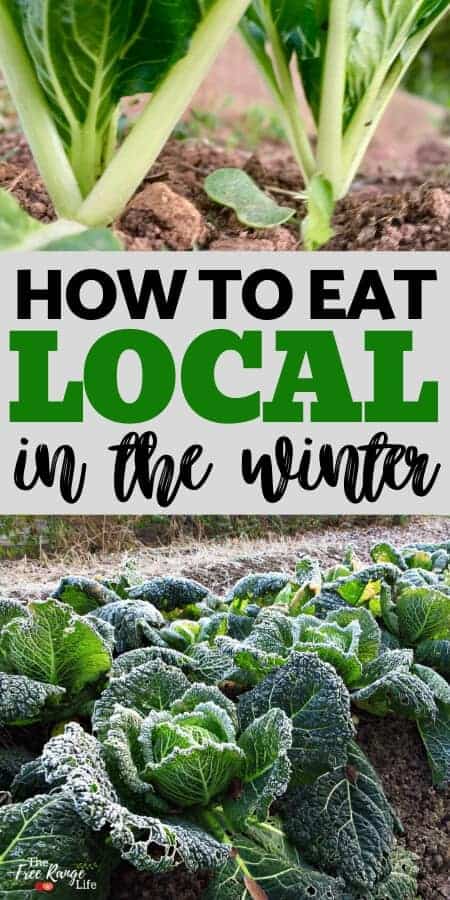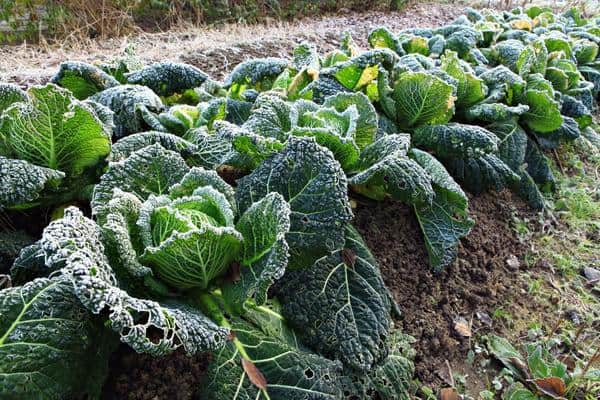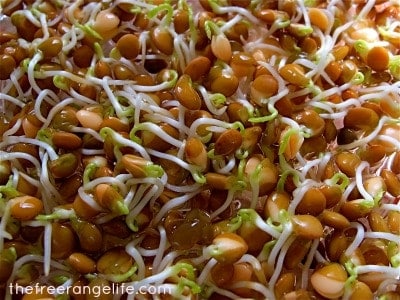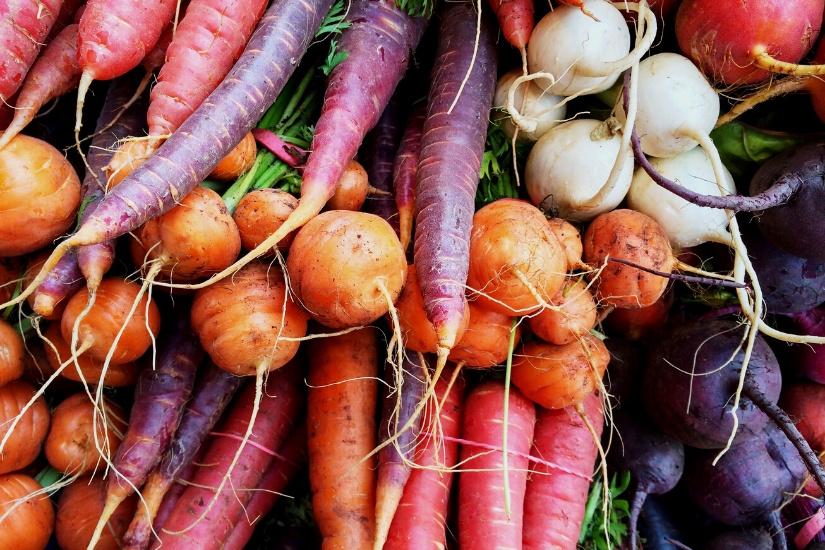Do you love to eat naturally and support your local economy? Here’s how to eat local in the winter- when fresh produce can be scarce!
Eating locally is one of the best ways to support your local economy. Your food dollars are put towards supporting the farmers in your area and less money is wasted on the fuel and transportation costs that accrue while trucking foods in from all over the world.
This site contains affiliate links. If you make a purchase using one of these links, I may earn a commission. Please see my disclosure page for more information about cookies collected and our privacy policy.
But unless you live in a tropical or warm climate, how do you eat locally during the colder winter months?
While it can be more difficult, it’s not impossible. Here are 5 tips on how to eat local in the winter.
How to Eat Local in the Winter (No Matter Where You Live!)
Plan Ahead
The most important thing to remember when planning a local diet, is to plan ahead. You need to know your growing season, even if you don’t grow anything yourself (which you should, by the way!).
You need to know when strawberries, peaches, and apples are ripe and ready to be picked. You need to know when all your favorite summertime vegetables are at their peak.
If you know these things you can use the knowledge to plan ahead and stock your pantry and freezer for the months when things won’t be so plentiful. When things are green and growing, get out there and…
- Visit pick-your-own farms and fill your freezer with fresh berries
- Buy tomatoes, potatoes, squash, etc. in bulk from a local farm or farmer’s market and can, freeze or store the bounty
- Visit a local orchard and can fresh peaches, applesauce or other tree fruits
- Start your own garden and eat fresh all summer, and store the excess for the colder months
Taking these steps will ensure you have a full stock of local foods to eat when the ground is frozen and the trees are barren.
Check out my food preservation archives for more ideas on how to preserve foods that are plentiful in the summer for eating in the winter.
Eat Your Roots and Greens
Roots such as turnips, carrots, and radishes can be grown in cold frames or under cloches even in very cold temperatures. The same goes for many greens, such as collards,kale, and spinach.
If you don’t grow your own, search out a local farm that grows these crops throughout the winter.
Add these to your stored potatoes and squash, or your local meat, eggs, and cheese and you will have a feast!
Find a Winter CSA
CSAs aren’t only for the summer. Search your area resources for many of the “winter CSA” options that are available. Pickings will be slimmer, but you will still get a box of fresh, local produce each week to add to your meals.
Some areas, such as here in Western North Carolina, there is even a winter CSA that provides customers with preserved foods- they spend all summer collecting and preserving the summer bounty and then pass it out to customers all winter long.
Grow indoors
There are some foods that can be grown indoors which can add a lot of fresh (and local!) nutrients to your winter meals.
Sprouts and microgreens are a highly nutritious and filling addition to any meal and they are quite easy to grow.
It takes less than a week and you can have a constant supply of fresh sprouts or micro greens for your meals.
You can also grow herbs, such as rosemary, indoors all year round.
Again, if you don’t want to grow it yourself, search out a local farm who does grow microgreens- it’s a pretty popular business these days!
A Tower Garden can also help you grown an amazing amount of food in a small space- all year long. Their indoor gardening system with lights can help you grow herbs and greens all winter long. And if you want to try your hand at self pollinating you may even be able to get veggies like squash or tomatoes!
Eggs, Meat, and Dairy
These things are all available year round locally. In the summer months it is easy to fill up on fresh veggies and fruits, but in the winter consider upping your intake of these high proteins- they will keep you full and warm in the cold months!
Raise your own chickens or ducks for a fresh supply of eggs.
Search out CSA options for your meat and eggs. You can get a box filled with locally raised meat/eggs to use in your winter meals.
In Season Foods to Eat During the Winter
Below are some of foods that can be harvested in the winter:
- Spinach
- Radish
- Kale
- Carrots
- Onions
- Beets
- Swiss Chard
- Turnips
- Rutabaga
- Parsnip
- Collards
- Arugula
- Cabbage
- Bok Choy
Most of these foods will need to be grown under cover, but they can withstand cold temperatures, so many local farms can grow them in greenhouses or high tunnels and have them available for those who want to eat local in the winter.
If you try to eat a mostly or all local diet, how do you keep your promise in the colder months? I’d love to hear your suggestions on eating local in the winter!







Thanks you very informative..